“A photograph has edges, the world does not. The edges separate what is in the picture from what is not.”
—Stephen Shore.
Framing
Framing refers to how elements are positioned within the boundaries of the photograph. Effective framing draws the viewer’s attention to the main subject, emphasising its importance within the scene. Photographers may use natural or architectural features, such as doorways or tree branches to create a visual ‘frame’ around the subject, thereby enhancing focus and adding depth to the image. Passive and active framing are two of the types of framing photographers can employ when composing their shot.
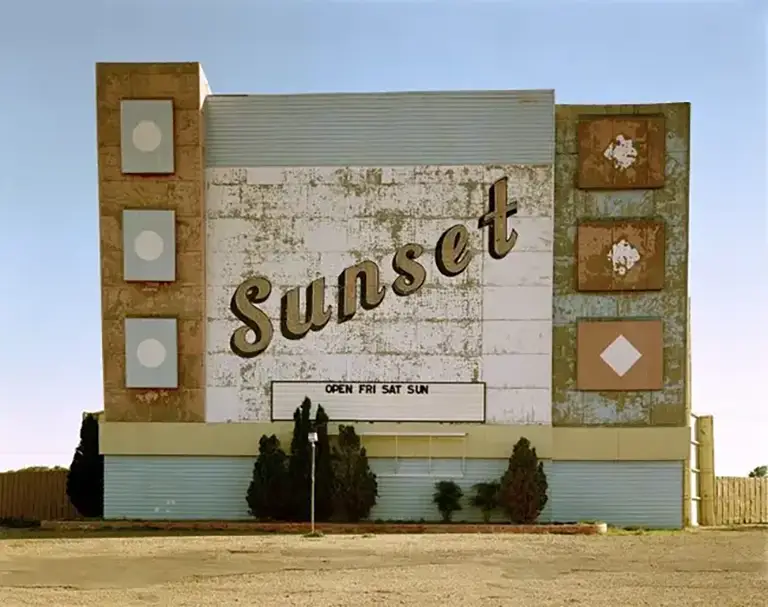
Stephen Shore. “Sunset Drive In, West 9th Avenue, Amarillo, Texas”, 1974.
Passive Framing
In passive framing the main subject is not really being affected by the frame. The subject is usually wholly framed by the edges of the photograph and there is no sense of anything happening just outside the edges of the photograph.

Peter Fraser. “Two Blue Buckets”, 1986.
Active Framing
In Active framing the boundaries of the photograph affects the main subject much more. The frame relates much more to the subject and hints at a world that exists beyond the confines of the photograph.

Alex Webb. “Children playing in a playground. Havana. Cuba”, 2000.
Viewpoint
Low Viewpoint – Looking Up
This series of eight photographs are examples of using different viewpoints. The first two use a low-down viewpoint looking up at the subject.
The first picture is of the Northumberland Fusiliers Memorial ‘The Response’, which is in the public gardens of St. Thomas the Martyr in Barras Bridge, Newcastle Upon Tyne. It depicts St. George, the patron saint of infantrymen and cavalrymen, carved in granite. Taking the picture from below makes the subject appear more imposing and important.

Photography by Simon Moore (fotosim).

This second image shows the opposite side of the same memorial. It is a large cast bronze statue depicting the mobilisation of the 5th Northumberland Fusiliers in April 1915, as they marched down the Great North Road towards Newcastle Central Station.
Photography by Simon Moore (fotosim).
High Viewpoint – Looking Down
These next two pictures show a high up viewpoint that is looking down on the subject.
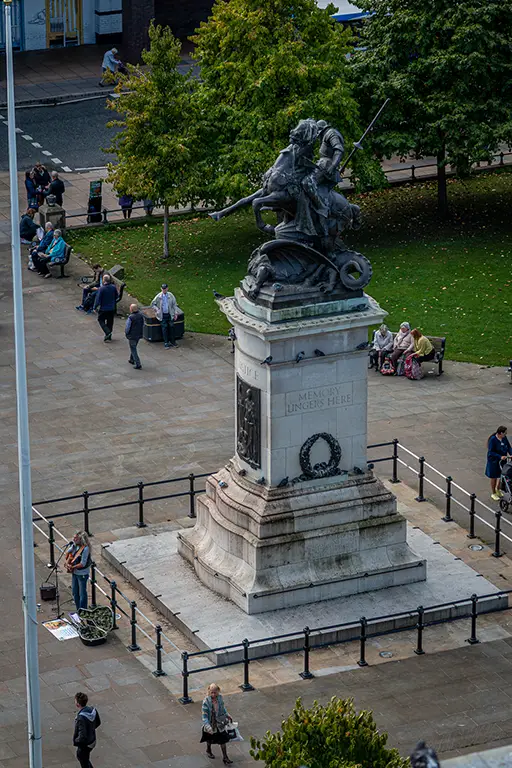
The first picture is of the war memorial in Old Eldon Square, Newcastle Upon Tyne. The memorial is a large Portland stone pedestal with a large bronze statue of St. George on his horse slaying the eponymous dragon. It was taken from the top of Eldon Square multi-storey car park, with a telephoto lens with a focal length of 83mm.
Photography by Simon Moore (fotosim).
This next picture, also taken from the roof of Eldon Square multi-storey car park, shows a bus driving along Percy Street and the Spiral ramp of the car park. It uses rule of-thirds in the composition, the spiral shape in the right third and the bus on the top third. It’s also interesting seeing all the parked cars but also the bus which complement each other. I also like the blue buildings and white window frames.
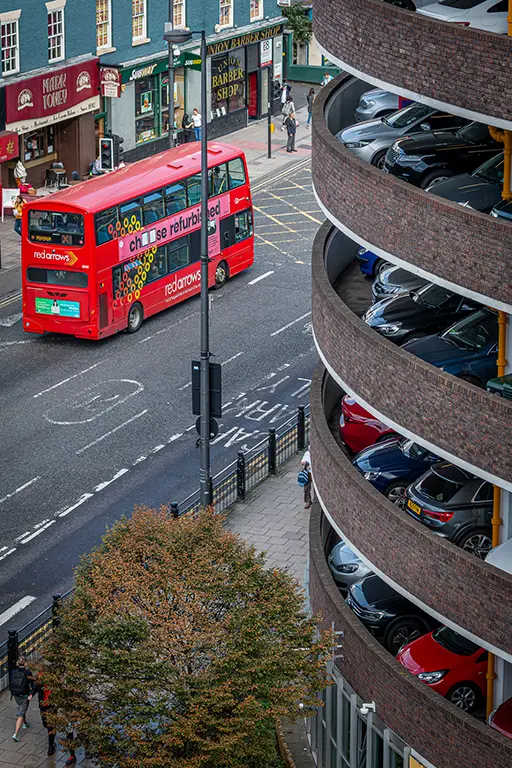
Photography by Simon Moore (fotosim).
Unusual Viewpoints or Juxtaposition
These next two pictures make use of either unusual positioning or juxtaposition.
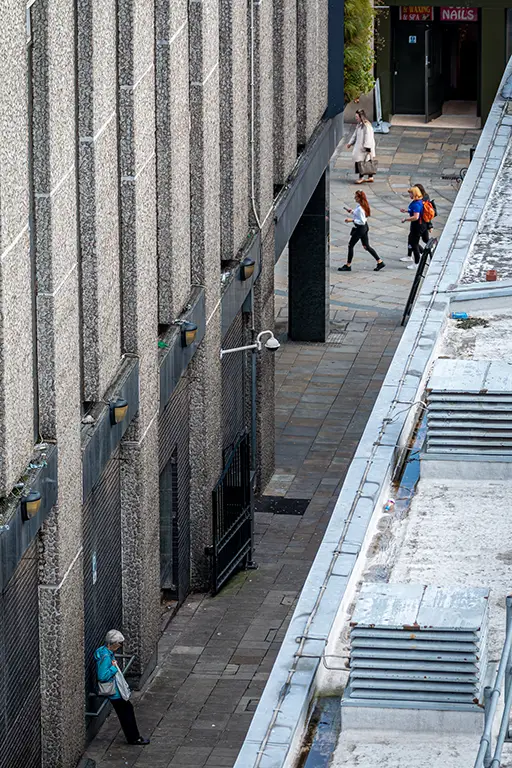
The first image is taken from the roof of Eldon Square looking down towards Northumberland Street. There are a few examples of juxtaposition here. There is an old lady standing alone in the side street while a group of young girls are walking up Northumberland Street. The vertical lines of the building on the left are juxtaposed with the flat roof and horizontal lines on the right. Also, the narrow side street is dark and gloomy while the main street looks bright and busy. I also desaturated the colours slightly in Adobe Lightroom to enhance the gloomy feel of the side street.
Photography by Simon Moore (fotosim).
The next picture shows the back of Grey’s Monument. It shows an unusual and rarely seen part of the statue. It is positioned between the two towers of the more modern building between the monument and the camera.
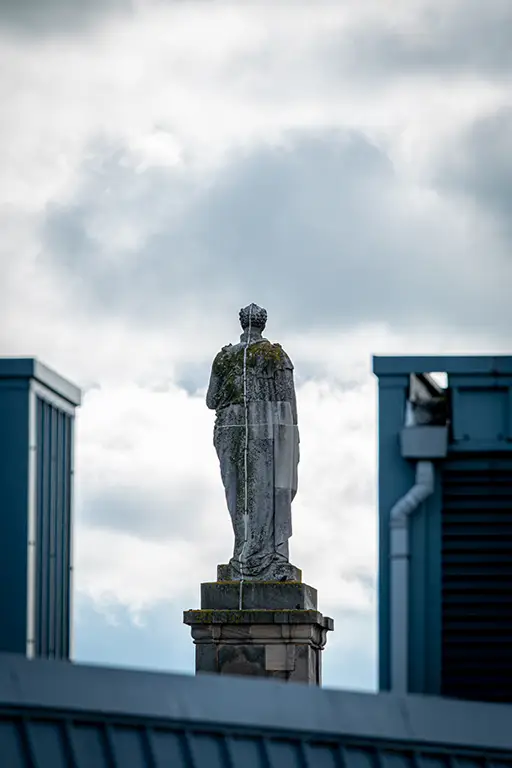
Photography by Simon Moore (fotosim).
These last two photographs are further examples of unusual and uncommon viewpoints.
The first one shows one of the vertical supports and part of one of the arches of the Willington Dene Viaduct in Howdon, Wallsend. It is an unusual viewpoint as most people would take a picture of the entire bridge from a distance to show all seven of the arches. From this perspective it captures most of the features of the bridge but narrows them down to a single part of one of the arches and one of the towers.
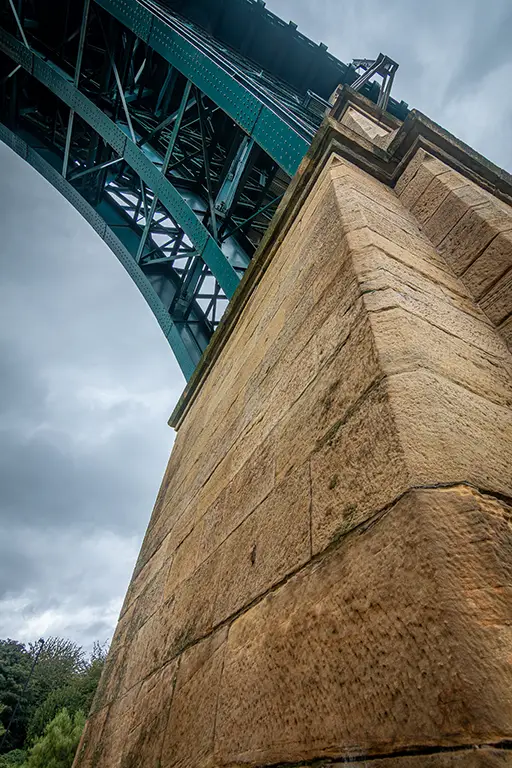
Photography by Simon Moore (fotosim).
I shot this next photograph from ground level using a wide-angle lens. I used the rotatable screen on the camera and live view to more easily compose the photograph. This gives quite a distorted view of the car make the front look as if it is bulging out. I also used a polarising filter, which helped enhance the details of the grass in the foreground and the clouds.
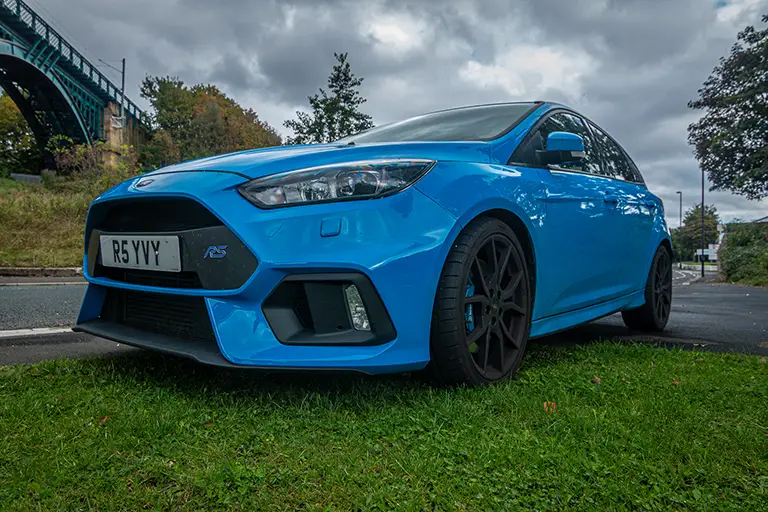
Photography by Simon Moore (fotosim).
Detail
Detail is where storytelling becomes intimate. It’s the texture of a weathered hand, the reflection in an eye, the tiny imperfection that reveals authenticity. By isolating detail, you invite your viewer to slow down and truly see. Great photography isn’t about showing everything — it’s about showing what matters most. When you focus on the subtle and the specific, your images gain emotional weight and depth.
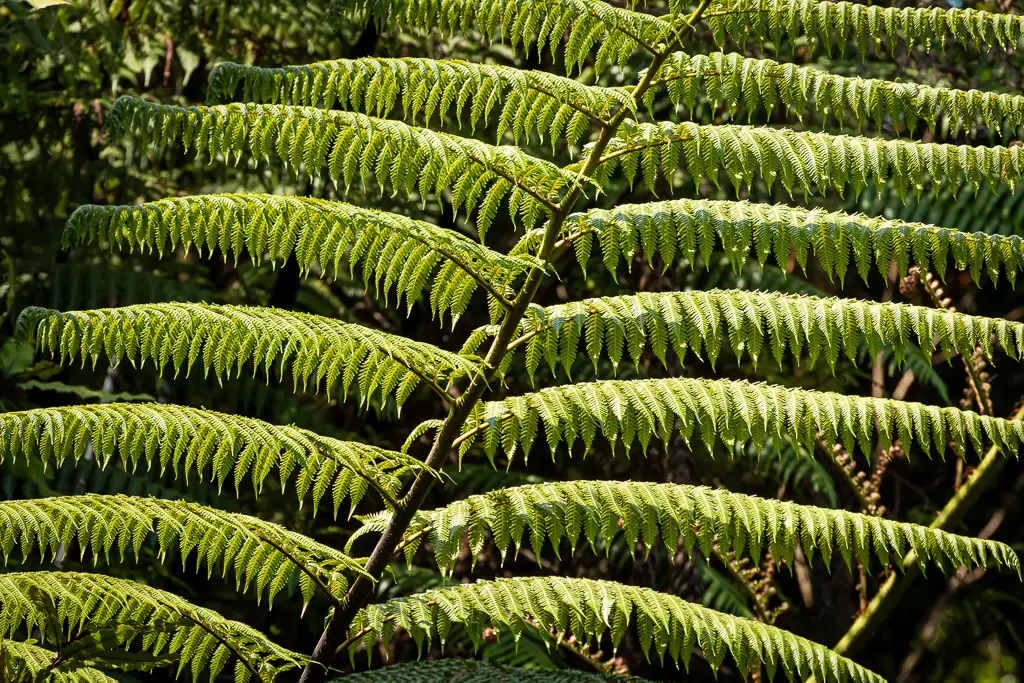
Photography by Simon Moore (fotosim).
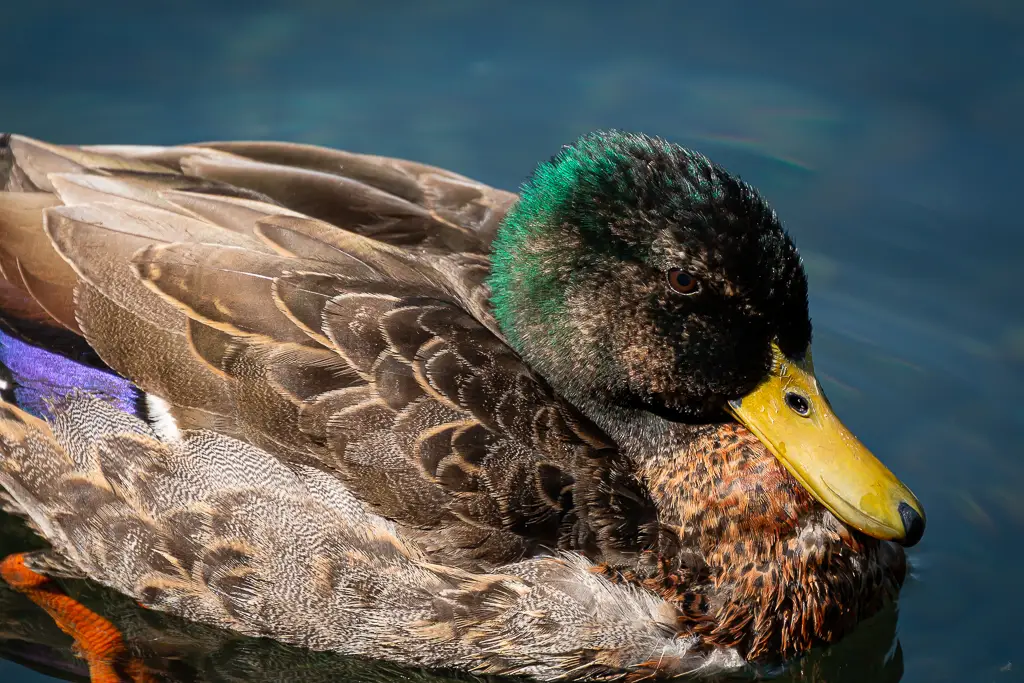
Photography by Simon Moore (fotosim).
Focus
Focus directs attention. It decides which elements of your story are sharp and which fade softly into suggestion. Playing with depth of field, from razor-sharp subjects to dreamy bokeh backgrounds lets you control the visual hierarchy of your image. Intentional focus transforms technical skill into artistic statement, turning clarity and blur into the grammar of visual language.
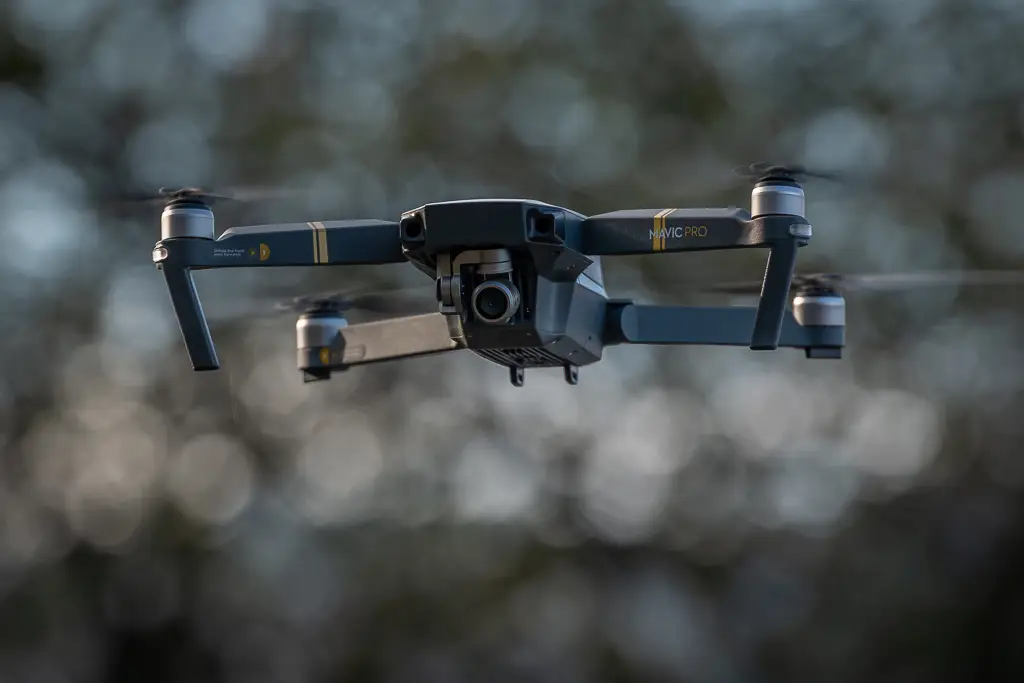
Photography by Simon Moore (fotosim).
Time
Photography is the art of capturing time, freezing it, stretching it, or hinting at its passage. A fast shutter can lock a fleeting moment in crystal clarity; a long exposure can reveal motion as fluid light and energy. Every frame is a negotiation with time, deciding whether to stop it or let it flow. When you master this control, you don’t just record moments; you create them.
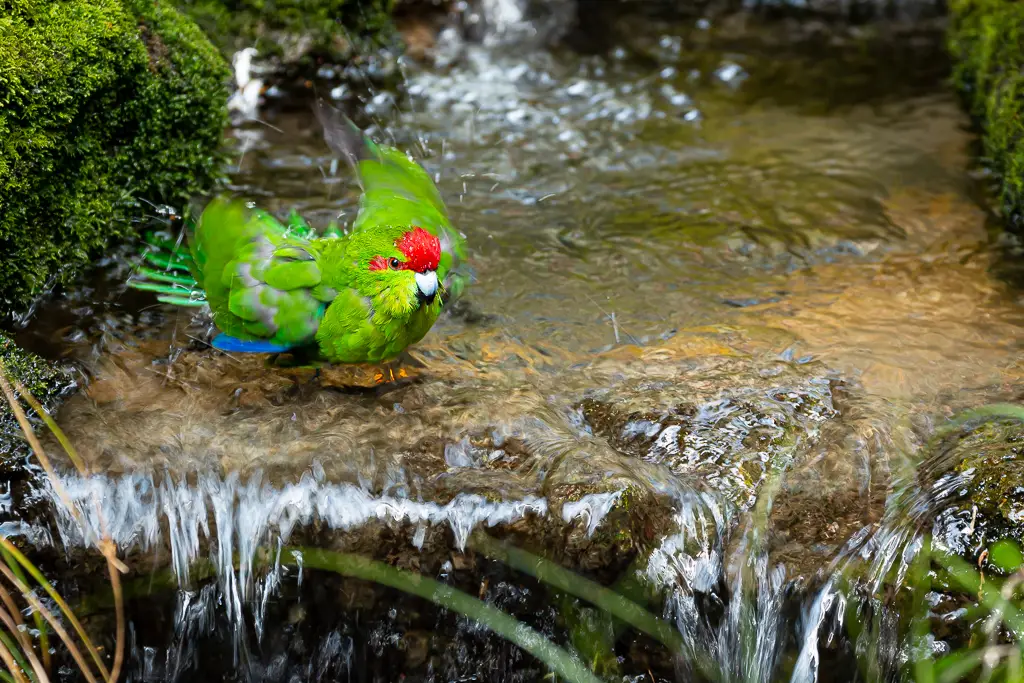
Photography by Simon Moore (fotosim).
Light
Light is everything. It sculpts form, defines mood, and breathes life into your images. Harsh midday sun tells a different story than the soft glow of golden hour or the quiet mystery of twilight. Learning to read and shape light to chase it, bend it, and sometimes simply wait for it is what elevates photography from observation to expression. In the end, it’s light that turns vision into emotion.

Brassaï (Halász, Gyula), 1935, Buttress of the Elevated.
Brassaï, was born 9 September 1899 in Brassó, Transylvania (modern day Romania). He moved to Paris in 1924 and spent much of his time photographing the city and its people. Mostly at night, he would walk the streets of his neighbourhood and photograph the sex workers, street cleaners and other people out in the dark. In 1933 he published his celebrated book Paris du Nuit (Paris by Night).
The above photograph, taken in Paris in 1935, makes excellent use of the street lights, one of which is visible in the background. The shadows also convey an eerie feeling along with the deserted street. Even the shadow of the buttress on the adjoining wall looks like someone wearing a hat hiding in the shadows.
Conclusion
Visual communication in photography is about more than technical skill, it’s about intention. Framing, viewpoint, detail, focus, time, and light are the tools that shape not just what we see, but what we feel. Each choice you make behind the lens builds a language uniquely your own; one that speaks through composition, emotion, and atmosphere. When these elements come together, photography transcends documentation and becomes storytelling. Every image becomes a conversation between you and your viewer; a moment where vision, creativity, and connection meet.

